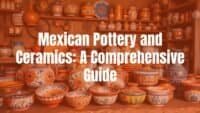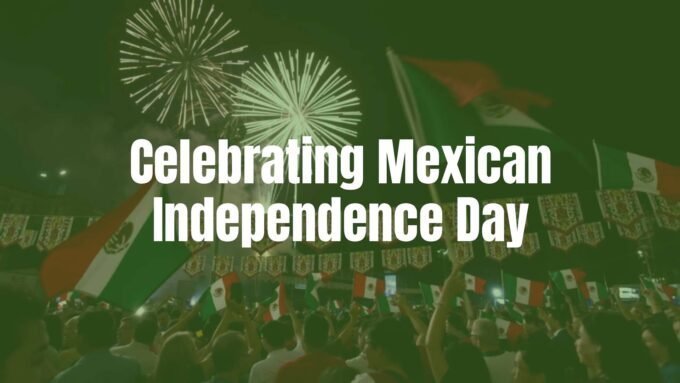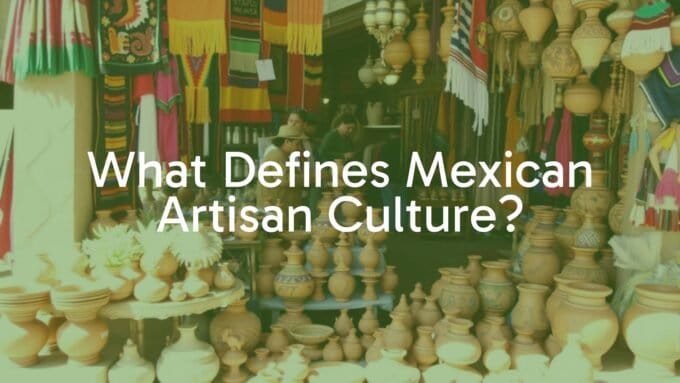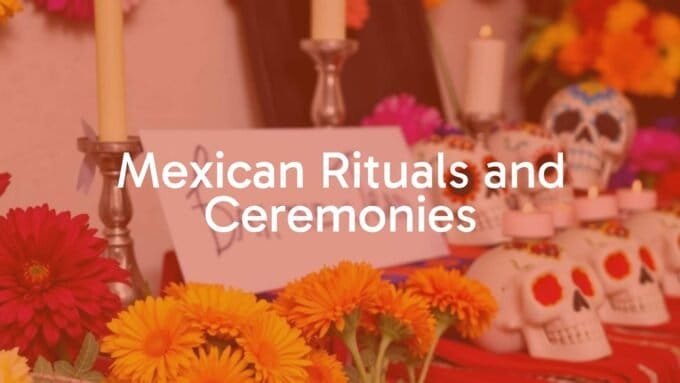Mexican mezcal and tequila are iconic spirits from Mexico. Both come from the agave plant, yet each has its own style, built on centuries of tradition and careful craft. Tequila is a specific type of mezcal, but the way they are made, where they come from, and which agaves they use give them very different characters. Learning these differences opens the door to a deeper respect for Mexico’s rich drink culture.
These agave spirits are much more than alcohol. They carry stories of Mexican history, culture, and skill. From ancient ceremonies to today’s cocktails, mezcal and tequila continue to share a lasting legacy.
What defines Mexican mezcal and tequila?
Both mezcal and tequila are distilled from agave, a succulent native to dry parts of the Americas, mainly Mexico. That shared start is where the likeness ends. Their paths split into different methods and flavors. Around the globe they are valued for their unique tastes, the craft behind them, and the strong place they hold in Mexican identity.
The word “mezcal” comes from the Aztec term “metl ixcalli,” meaning “cooked agave.” That step is central to both. But how the agave is cooked, fermented, and distilled decides whether the final spirit is tequila, mezcal, or another agave drink.
How are mezcal and tequila linked to Mexican tradition?
Tequila and mezcal are woven into Mexico’s past, going back to the region’s first peoples. Before the Spanish arrived, Nahuatl-speaking groups drank “pulque,” a fermented sap from agave. Mezcal traces to pre-Hispanic times, when Zapotecs, Mixtecs, and Aztecs prized it for spiritual use in rites and ceremonies.
Spanish settlers in the 1500s brought distillation, which shaped and refined how these spirits were made. Local knowledge mixed with European tools, forming the base for modern mezcal and tequila. By the late 1800s and early 1900s, tequila had become a symbol of Mexican pride. Today, both are more than drinks. They are living signs of tradition, valued for honesty and the skill behind them.
Agave: The heart of both spirits
Agave is the core of mezcal and tequila. The agave species and where it grows matter a lot for taste and character. The biggest split starts with which agaves each can use.
Tequila has one rule: it must come only from blue Weber agave (Agave tequilana Weber azul). This agave is high in sugar, great for fermenting and distilling, and usually takes six to ten years to mature. It grows mainly in Jalisco and other approved areas. Mezcal uses many more agaves-over 30 types. This wide range makes mezcal’s flavors broad and layered.
What is the history of mezcal and tequila in Mexico?
The story of mezcal and tequila mixes ancient custom, colonial change, and bold new ideas. They are more than drinks; they are living pieces of Mexico’s past, showing the resourcefulness and identity of its people. Their path from old fermented beverages to global spirits shows how lasting and appealing they are.
The exact start of distillation in Mexico is still debated among historians and archaeologists. One idea says local cultures distilled long ago, based on clay pots thought to be used for agave spirits around 32% ABV. Another idea credits Filipino migrants who came with Spanish colonizers in the 1500s. They knew how to distill palm sap into “Tuba.” After the Spanish banned “Vino de Coco” and cut palm trees, Filipinos and Mexicans turned to abundant agave, helping spark mezcal.
Origins and evolution through centuries
Long before modern spirits, people in Mesoamerica drank pulque, a lightly alcoholic drink from fermented agave sap. It began as a drink for elites in rituals and later for health. Distillation from Spain arrived in the 16th century and turned fermented agave drinks into spirits.
Mezcal, the broader category, came first from this distillation, kept alive by makers despite colonial limits. Tequila started as “vino de mezcal,” tied to a place and method. Spirits shipped from the town of Tequila in Jalisco carried that name, later shortened to “Tequila.” By the late 1800s and early 1900s, tequila stood as a national emblem. Both spirits worked through rules and authenticity issues over time, and their growing global reach shows their cultural weight and the steady craft behind them.
Key regions in Mexican mezcal and tequila heritage
Place matters as much as agave. Tequila production is tightly regulated and centered in Jalisco, with the town of Tequila at its center. Jalisco’s volcanic soil and climate suit blue Weber agave very well. Other approved areas include parts of Nayarit, Tamaulipas, Michoacán, and Guanajuato.
Mezcal covers a wider map, with nine states allowed. Oaxaca leads, making about 85% of all mezcal. Its rich agave diversity and deep craft methods give Oaxacan mezcal a special touch. Other key states include Durango (wild agaves), Guerrero (artisanal styles), San Luis Potosí (unique pot stills), Tamaulipas (fruity notes), Zacatecas (historic producer), Michoacán (volcanic lands), and Puebla (newer but varied). Soil, weather, and local methods shape each region’s mezcal.
What distinguishes mezcal from tequila?
Both are Mexican agave spirits, yet they differ in agave types, protected regions, and how they are made. Knowing these points helps you see the diversity within Mexican spirits.
“Mezcal” is the umbrella. All tequila is mezcal, like all bourbon is whiskey. Tequila is a narrow, highly regulated style within that group. This can cause confusion, but the details make things clear.
| Feature | Tequila | Mezcal |
|---|---|---|
| Agave species | Only blue Weber | 30+ species (e.g., Espadín, Tobalá, Tepextate) |
| Cooking method | Steam in ovens/autoclaves | Roasted in earthen pit ovens |
| Main regions | Jalisco + parts of 4 states | Oaxaca + 8 other states |
| Typical flavor | Clean, agave-forward | Smoky, earthy, wide range |
Types of agave used
Tequila must be made only from blue Weber agave. This gives a steady base and a known taste. It matures in 6-10 years and grows mostly in Jalisco.
Mezcal can come from many agaves. Espadín is most common due to faster growth and yield. Wild agaves add variety: Tobalá (delicate fruit and flowers), Arroqueño (rich, sweet), and Tepextate (floral and spicy, up to 30 years to mature) are well-known examples.
Geographical denominations and protected origin
Both spirits have Denominations of Origin (DO) that set where and how they can be made. Tequila’s DO is stricter: only Jalisco and parts of Michoacán, Nayarit, Guanajuato, and Tamaulipas. The town of Tequila is central to its identity.
Mezcal’s DO allows nine states: Oaxaca, Durango, Guanajuato, Guerrero, San Luis Potosí, Tamaulipas, Zacatecas, Michoacán, and Puebla. Oaxaca is the main hub. These rules give legal protection and keep regional methods, soils, and climates that shape the final spirit.
Differences in production methods
Method drives flavor. For tequila, agave piñas are steam-cooked in large ovens or autoclaves. This turns starches into sugars without smoke. The cooked piñas are then crushed, often by roller mills or tahonas, to get the juice.
Mezcal is usually made in small batches with older methods. Makers slow-roast agave in underground pits lined with hot stones, wood, and charcoal for days. This gives mezcal its smoky taste. After roasting, the agave is crushed with a stone wheel (tahona) pulled by a horse or donkey, or by hand. These choices lead to very different aromas and flavors.
How are mezcal and tequila made?
Both follow the same basic steps: harvest, cook, crush, ferment, and distill. Small choices at each step change the outcome in big ways. From how ripe the agave is to the still material, every decision shapes the final bottle.
Jimadores (harvesters) pick mature agaves and trim them to the piña. Cooking, fermentation time, and stills (copper, clay, or stainless steel) all play a key role in the style you taste.
Mezcal production: From roasting to distillation
Mezcal often follows time-tested, small-scale methods. Makers harvest agaves from many species, then roast the hearts in underground pits lined with stones, wood, and charcoal for three to four days. The earth and smoke give mezcal its earthy, smoky core.

After roasting, the agave is crushed-traditionally by tahona or by hand-to release sweet juices. Fermentation happens in open tanks, rock pits, or even animal hides with native yeasts. The wash is then distilled twice, often over direct fire in copper or clay stills. Some mezcals, like Pechuga, are made with fruits, herbs, or a raw chicken or turkey breast hung in the still for aroma. Most mezcals are bottled young (joven) so the pure agave and smoke stand out.
Tequila production: Industrial and traditional techniques
Tequila blends tradition with larger-scale tools, especially for big brands. Blue Weber agaves are harvested and cooked in brick ovens or pressure cookers. Steam cooking creates fermentable sugars without smoke, giving tequila a cleaner, agave-forward taste.
The cooked piñas are crushed with roller mills or sometimes a tahona, then the juice ferments with natural or added yeasts. Tequila is distilled twice, first to make “ordinario,” then refined to the final strength in copper or stainless steel stills. After distillation, aging in white oak sets the style: Blanco, Reposado, Añejo, or Extra-Añejo.
Aging categories for mezcal and tequila
Both spirits can be aged. The names are similar, though the results differ due to how each is made. Wood aging brings roundness and adds flavors from the barrel.
- Blanco/Joven (White/Young): Unaged or aged less than two months. Blanco tequila is crisp and bright, showing pure agave. Joven mezcal is clear and direct, with raw agave and smoke up front.
- Reposado (Rested): Two months to one year in oak. Tequila gains a golden color and notes of vanilla, caramel, and honey. Mezcal becomes softer, with warmed notes like smoked vanilla or charred fruit.
- Añejo (Aged): Tequila ages 1-3 years; mezcal 1-12 years. Both turn darker and take on deeper wood tones. Añejo tequila shows oak, vanilla, dried fruit, nuts, and spice. Añejo mezcal blends smoke and wood into a rich whole.
- Extra-Añejo (Extra Aged): Mostly for tequila, aged over three years. These can resemble fine brandies or whiskies, with chocolate, tobacco, and dark fruit.
Aging doesn’t automatically make a spirit “better.” Many people enjoy the clear, direct taste of Blanco tequila or Joven mezcal to get the pure agave and the maker’s style.
Which varieties of mezcal and tequila exist?
Mexican agave spirits offer many styles, mainly split by aging time. Both tequila and mezcal have clear categories, so you can find what suits your taste-from fresh and lively to deep and mellow.
Knowing these groups helps you choose what fits your palate, whether you want brightness in a cocktail or a slow sipper from a barrel.
Blanco, reposado, and añejo tequilas
Tequila types are mostly about time in oak:
- Blanco (Silver): Unaged or under two months in steel or neutral oak. Clean and crisp, with blue Weber agave at the center: citrus, pepper, and a touch of sweetness. Example: Don Julio Blanco.
- Joven (Gold): Often a blend of Blanco with Reposado or Añejo, sometimes with coloring or flavorings. Many “Gold” bottles are mixtos (not 100% agave), so check for “100% Agave.”
- Reposado (Rested): Two to twelve months in oak. Balances fresh agave with soft oak notes like vanilla, caramel, and honey, plus a smoother finish. Example: Don Julio Reposado.
- Añejo (Aged): One to three years in oak. Darker and richer, with dried fruit, nuts, spices, and stronger oak. Example: Casamigos Añejo.
- Extra-Añejo (Extra Aged): Over three years in oak. The most layered and mellow, often compared to aged whisky or cognac, with chocolate, tobacco, and dark fruit.
Types of mezcal: joven, reposado, añejo, and artisanal
Mezcal uses the same aging names, but the smoke and agave variety make each style feel different:
- Joven (Young): Unaged or under two months. Clear and true to the agave and pit-roasting. Flavors can be fruity, floral, earthy, or mineral, plus that signature smoke. Example: 400 Conejos Joven Espadín.
- Reposado (Rested/Madurado): Two months to a year in oak. Adds color and rounds the smoke, bringing warm notes like smoked vanilla, charred fruit, and toasted spice.
- Añejo (Aged): One to twelve years in oak. Darker and smoother, with smoke and wood woven together for a rich sip.
- Artesanal/Ancestral: Labels for method rather than age. These highlight traditional steps like pit roasting, tahona crushing, and open-air fermentation. Often bottled as Joven, they show intense, place-driven flavors.
How do mezcal and tequila taste?
Both start with agave but taste quite different. The agave species, local conditions, and especially the cooking method shape the final flavor.
Blanco tequila is bright and zesty, while many mezcals are smoky and layered. Each tells a different story of agave and craft.
Signature flavor profiles for mezcal
Mezcal is known for smoke, which comes from roasting agave in earth pits over wood and charcoal. Smoke can be light or bold, based on the maker and region.
Beyond smoke, mezcal can be earthy, fruity, and citrusy, with a green, vegetal edge. Wild agaves add unique twists: Tobalá can be delicate and floral; Tepextate can be floral and spicy; Arroqueño often leans rich and sweet; Barril can taste spicy and aromatic; Madrecuixe brings herbal and citrus notes. Joven mezcals show these flavors clearly, while Reposado and Añejo versions add warmed notes like smoked vanilla, charred fruit, and gentle spice from the wood.
Flavor notes in tequila by aging style
Tequila flavor comes from blue Weber agave and time in wood. Because it is steam-cooked, it usually does not taste smoky.
- Blanco Tequila: Bright, crisp, clean. Citrus, pepper, and light sweetness. Great in cocktails.
- Reposado Tequila: Two to twelve months in oak. Smoother, with vanilla, caramel, and honey layered over fresh agave.
- Añejo Tequila: One to three years in oak. Deeper and richer, with dried fruit, nuts, spice, and stronger oak.
- Extra-Añejo Tequila: Over three years in oak. Most mellow and complex, with chocolate, tobacco, and dark fruit, while keeping a soft agave note.
What makes mezcal smoky?
Mezcal’s smoke comes from how the agave is cooked. Makers dig pits, line them with hot stones, add wood and charcoal, and light the fire. Agave hearts go in, get covered with earth, and roast for days. The agave takes in smoke from the fire and charcoal, giving mezcal its signature taste. Steam-cooked tequila does not get this smoky flavor. Good mezcal balances smoke with the agave’s natural flavors.
What are the best ways to drink mezcal and tequila?
Both spirits can be enjoyed many ways-from slow sipping to classic cocktails. The idea is to taste what makes each special, whether neat or mixed.
Moving past quick shots, modern drinking leans toward savoring them like fine spirits.
Traditional drinking rituals and glassware
For purists, sip neat to catch every aroma and note. The right glass helps.
For tequila, a snifter or tequila tasting glass works well, especially for Reposado and Añejo. Blanco also shines neat or on ice in a simple tumbler.
Mezcal is often served neat in small clay cups called copitas or in shallow glasses that let aromas open up. A common pairing is orange slices with sal de gusano (worm salt: ground fried larvae, chili, and salt), which brings out mezcal’s flavors. Another tradition is a chaser of sangrita-a spicy, sweet, and sour mix of tomato, orange, lime, and chili-which refreshes the palate and matches mezcal’s depth.
Classic Mexican cocktails featuring mezcal and tequila
Sipping neat is great, but both spirits also make standout cocktails:
- Margarita: Tequila (Blanco or Reposado), fresh lime, and orange liqueur (Cointreau or Triple Sec). A balanced classic.
- Paloma: Tequila (often Blanco), grapefruit soda (like Jarritos), and fresh lime. Simple and very refreshing.
- Tequila Sunrise: Tequila, fresh orange juice, and grenadine for a sunrise look. Fruity and easy-drinking.
- Oaxaca Old Fashioned: Mezcal and tequila with agave nectar and bitters. A smoky take on the Old Fashioned.
- Mezcal Negroni: Mezcal, Campari, and sweet vermouth. Smoky and bitter with depth.
- Tequila Old Fashioned: Añejo or Reposado tequila, agave nectar, and bitters. Spirit-forward and smooth.

Tips for sipping and savoring
To get the most from mezcal and tequila, try these tips:
- Start with 100% Agave: Choose bottles labeled “100% Agave” to avoid mixtos with added sugars. This usually means cleaner taste and better quality.
- Sip, Don’t Shoot: Take small sips and let the flavors unfold.
- Look at the Color: Clear for Blanco/Joven; deeper gold to amber for Reposado, Añejo, and Extra-Añejo.
- Smell First: Swirl gently and inhale. Note earthy, fruity, floral, smoky, or woody aromas.
- Match Food Thoughtfully: Blanco tequila suits light, fresh dishes; aged tequilas fit richer meals. Mezcal’s smoke pairs well with grilled meats, chocolate, and spicy food.
- Play with Cocktails: Try different recipes. Both spirits are great bases for mixing.
What should you know before choosing mezcal or tequila?
Choosing among many agave spirits can be exciting and a bit overwhelming. A little knowledge helps you pick a bottle with real quality and honest roots. It starts with what goes in the bottle and what the label tells you.
Spotting signs of good craft helps you get a spirit that lives up to its heritage.
The importance of 100% agave spirits
Look for “100% Agave” on the label. This means all fermentable sugar came from agave, with no added cane sugar or corn syrup. Tequilas without this label are “mixtos” and can include up to 49% other sugars. Mixtos are cheaper but often lack the clean agave taste and depth of 100% agave spirits and may lead to rougher hangovers.
Choosing 100% agave usually gives you a better bottle that reflects the plant and the maker’s skill. Expect fuller aroma and a cleaner sip.
How to read mezcal and tequila labels
Labels carry useful details. Look for:
- 100% Agave: For tequila, “100% de Agave” or “100% Puro de Agave.” Many artisanal mezcals make this clear too.
- Denomination of Origin (DO): Confirms an approved region. Tequila: Jalisco or specific towns in the four other states. Mezcal: one of nine states, often Oaxaca.
- Agave Variety (Mezcal): Names like Espadín, Tobalá, or Tepextate hint at flavor.
- Aging Category: Blanco/Joven, Reposado, Añejo, or Extra-Añejo.
- NOM (Norma Oficial Mexicana): A four-digit code on tequila bottles that shows the distillery. You can look it up. Mezcal has CRM oversight and a NOM too, mainly to confirm rules were followed.
- Producer/Brand: Trusted names help. Tequila: Patrón, Don Julio, Herradura. Mezcal: Del Maguey, Mezcal Vago, Ilegal.
- Alc/Vol (ABV): Often around 40% for both, though some mezcals and tequilas are higher proof.
How to store your agave spirits
Good storage keeps flavor and aroma:
- Cool and Dark: Store upright, away from heat and sunlight. Light and heat can harm flavor over time.
- Seal Tightly: Close well after each pour to slow oxidation, which dulls taste and smell.
- Unopened vs. Opened: Unopened lasts indefinitely. Open bottles slowly change; try to finish within a year or two.
- No Fridge or Freezer: Cold temps mute flavors. Serve at room temp or with a little ice if you like.
Frequently asked questions about Mexican mezcal and tequila
People often have the same questions about these spirits. Here are clear answers to help you enjoy them more, from strength to the story of the “worm.”
Knowing these points can help you get past myths and focus on what makes them special.
Is mezcal stronger than tequila?
Not always. Both are usually around 40% ABV (80 proof). Some artisanal mezcals are bottled stronger-high 40s to low 50s-so they feel more intense. Some tequilas also come in higher proof. People may think mezcal is stronger because smoke and layered flavors can feel bolder. Check the label for ABV to be sure.
Does mezcal always have a worm?
No. The “worm” (actually a moth or weevil larva from the agave plant) is mostly a marketing trick used in the mid-1900s, often for lower-quality mezcals. High-quality, small-batch mezcal does not include a worm, and it doesn’t improve flavor. Tequila never has a worm by rule. A worm in the bottle usually points to a commercial novelty rather than a traditional spirit.
What food pairs well with mezcal and tequila?
Both spirits work well at the table and can lift many dishes:
Tequila Pairings:
- Blanco Tequila: Bright and peppery. Great with fresh seafood (ceviche, oysters), fish tacos, salads, and dishes with lime and cilantro. It also cuts through spicy food.
- Reposado Tequila: Soft oak, vanilla, and caramel. Try with grilled chicken, pork, enchiladas, or mole poblano. Also good with mild cheeses.
- Añejo and Extra-Añejo Tequila: Deep flavors like dried fruit, nuts, spice, and chocolate. Pair with steaks, slow-cooked meats, dark chocolate desserts, or aged cheeses.
Mezcal Pairings:
- Smoky Mezcal: A natural match for grilled or barbecued meats like beef, lamb, or pork. Smoke meets char.
- Earthy and Vegetal Mezcal: Good with roasted vegetables, mushrooms, and herbs like epazote or hoja santa.
- Fruity and Floral Mezcal: Pairs with tropical fruit salsas, fruit desserts, or light seafood where a hint of smoke helps.
- Spicy Food: Mezcal’s smoke and depth work well with chili heat.
- Chocolate: Dark chocolate (high cacao) goes nicely with mezcal’s earthy and smoky notes.
Orange slices with sal de gusano are also a classic way to enjoy mezcal’s flavors.













Leave a comment